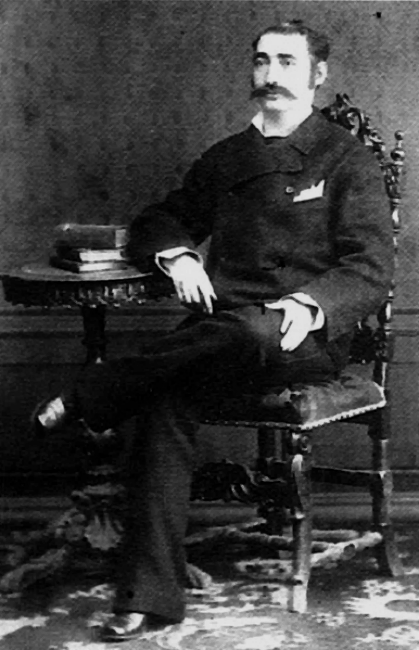

Queer Places:
Lycée Henri-IV, 23 Rue Clovis, 75005 Paris, France
Bellu Cemetery, Șoseaua Olteniței 3-5, București, Romania
 Mișu or Mihail Ion Văcărescu (1842 or 1843 – June 12, 1903), most commonly known as Claymoor, was a
Wallachian,
later Romanian
fashion journalist and gossip columnist, the son of poet
Iancu Văcărescu. A retired cavalry officer in the
Romanian Land Forces, he began writing in his late twenties or early
thirties, reaching his fame as a contributor to the Francophone daily
L'Indépendence Roumaine. He was widely respected for his verdicts on
fashion, and, as an arbiter of taste, contributed to his paper's renown;
however, people of his day also ridiculed him for his florid literary style,
his political involvement with the
Conservative Party, and his apparent homosexuality.
Mișu or Mihail Ion Văcărescu (1842 or 1843 – June 12, 1903), most commonly known as Claymoor, was a
Wallachian,
later Romanian
fashion journalist and gossip columnist, the son of poet
Iancu Văcărescu. A retired cavalry officer in the
Romanian Land Forces, he began writing in his late twenties or early
thirties, reaching his fame as a contributor to the Francophone daily
L'Indépendence Roumaine. He was widely respected for his verdicts on
fashion, and, as an arbiter of taste, contributed to his paper's renown;
however, people of his day also ridiculed him for his florid literary style,
his political involvement with the
Conservative Party, and his apparent homosexuality.
Claymoor's period of prominence, at the height of the Belle Époque, ended with his sudden death. By that time, he had also left a mark as one of Romania's first film critics. Although his almanac was still published, he himself was largely forgotten in the Kingdom of Romania by the end of World War I. Traces of his memory are preserved in disguised portrayals and parodies by writers such as Ion Luca Caragiale and Petru Dumitriu.
He died in Bucharest on June 12, 1903, after falling down in front of L'Indépendence Roumaine office, just as he was bringing in his latest Carnet chronicle. Although he is sometimes assumed to have died there, on the spot,[12] he actually did so at his sister's home.[18] The ultimate cause of death was a peptic ulcer.[41] Claymoor was buried at Bellu cemetery, Plot 17.[42] His objets d'art were auctioned off by January 1904,[43] but the Almanach du High-Life continued to be published over the following years.[3]
My published books: